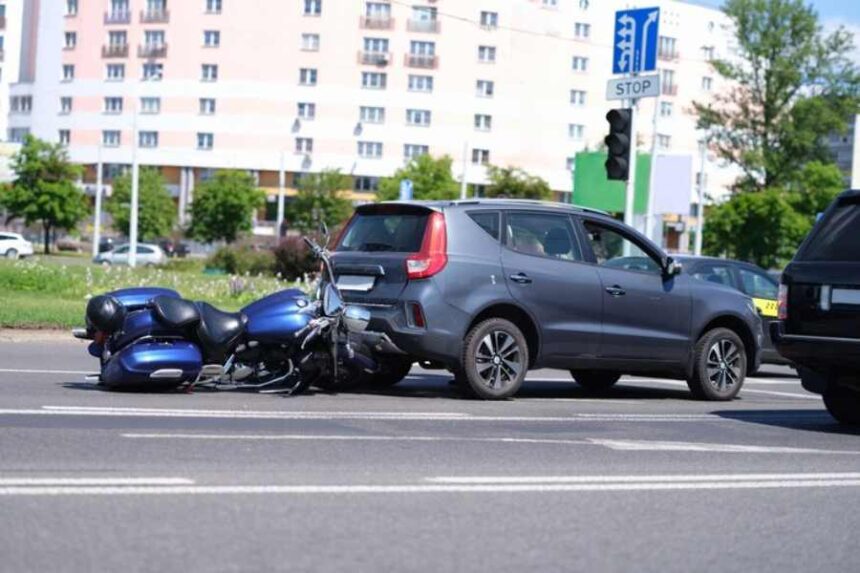Motorcycle accidents are a serious concern across the United States, often leading to fatal or life-altering outcomes. Riders face greater risk on the road than drivers of enclosed vehicles, making it essential to examine where and why these incidents occur most frequently. One pressing question that arises among safety experts and the general public alike is: What state has the most motorcycle accidents?
Understanding regional data and trends related to motorcycle crashes helps policymakers, safety advocates, and riders better prepare and respond. While all states experience such accidents to varying degrees, some consistently report higher crash rates, injuries, and fatalities involving motorcyclists. This article will delve deep into the U.S. states with the highest motorcycle accident rates, the factors contributing to these incidents, and what can be done to prevent them.
We will also explore how weather, population, road infrastructure, and helmet laws influence motorcycle accident trends. This in-depth breakdown provides insight into the numbers, underlying causes, and potential solutions. Whether you’re a concerned rider, a researcher, or a policymaker, this article offers comprehensive answers to the key question: What state has the most motorcycle accidents?
What state has the most motorcycle accidents?
The state with the most motorcycle accidents is typically Florida, followed closely by California and Texas. These states have high motorcycle ownership, warm weather year-round, and large populations, all of which contribute to more riders on the road and more frequent accidents. Helmet law variations and dense urban traffic also play a role. Florida has led the nation in motorcycle fatalities for several years.
Where Do Most Motorcycle Accidents Happen in the U.S.?
Motorcycle accidents remain a significant public safety concern across the United States, with certain states consistently reporting the highest numbers of crashes and fatalities. Data from the National Highway Traffic Safety Administration (NHTSA) reveals that Florida, California, and Texas lead the nation in motorcycle accident rates year after year.
Florida often ranks at the top, mainly due to its warm weather, which allows for year-round riding, and its large population of residents and tourists. The state’s fluctuating helmet laws have also contributed to the number of severe and fatal injuries.
California also sees high accident numbers, primarily because of its vast population and urban sprawl. Dense traffic in major cities like Los Angeles and San Francisco increases the likelihood of collisions. California also permits lane-splitting, which can lead to accidents if not done carefully.
Texas is not far behind, with its extensive highways, higher speed limits, and a growing community of riders. Metropolitan hubs like Houston and Dallas contribute significantly to the accident count.
Just as riders look for cute names for their bikes or biker clubs, understanding which states are riskiest helps prioritize safety. Analyzing these trends is essential for improving public awareness, policymaking, and road conditions.
Factors Behind High Motorcycle Accident Rates
Certain states have significantly higher motorcycle accident rates due to a mix of environmental, legal, and demographic factors. Understanding these causes is key to effectively addressing rider safety.
Warm Climate and Extended Riding Seasons
One key contributor to elevated motorcycle accident rates in certain states is their consistently warm climate. States like Florida and California experience favorable weather nearly year-round, encouraging motorcyclists to be on the road more frequently. With more motorcycles in use throughout the year, accidents naturally increase due to prolonged exposure to traffic conditions.
Population Density and Urban Congestion
Heavily populated states with large urban centers tend to see higher motorcycle crash rates. High volumes of cars, buses, and commercial vehicles in congested areas like Los Angeles, Miami, and Houston make riding more dangerous. Motorcyclists often have to navigate tight spaces and unpredictable driver behavior, increasing the likelihood of collisions.
Helmet Law Inconsistencies
Helmet laws vary significantly from state to state, and this lack of consistency plays a critical role in accident fatality rates. States with partial or no helmet laws often see more severe injuries and deaths when accidents occur, especially in states with high traffic volume.
Tourism and Inexperienced Riders
In tourism-heavy states, many motorcycle accidents involve visitors who rent bikes but may be unfamiliar with local traffic laws and road layouts. Vacationers may take more risks or simply lack the experience to ride safely in high-traffic areas, leading to a spike in crash statistics.
Poor Road Conditions and Speed Limits
Substandard road maintenance and high highway speed limits can seriously harm motorcyclists. Potholes, uneven surfaces, and unclear signage can easily lead to loss of control, particularly for novice riders traveling at high speeds.
Top 5 States With the Most Motorcycle Accidents
Motorcycle accident rates vary widely across the United States, but certain states consistently rank at the top due to weather, traffic volume, road laws, and rider behavior. Below are the top five states with the most reported motorcycle accidents, along with the key reasons behind their high crash numbers:
- Florida: Florida regularly tops the list for motorcycle-related fatalities and accidents. The state’s warm climate encourages constant riding, while a large population of residents and tourists increases road congestion. Inconsistent helmet laws over the years have also contributed to the severity of crash outcomes.
- California: With the largest population in the country, California naturally has more motorcycles on the road. Due to dense traffic, urban areas like Los Angeles and San Diego are especially prone to accidents. Additionally, California is one of the few states that legally allows lane-splitting, which, while helpful, can be risky if not done carefully.
- Texas: Texas features long highway stretches, high speed limits, and a massive community of motorcycle enthusiasts. These factors combine to create a state environment where motorcycle crashes are both frequent and often severe.
- North Carolina: This state has seen rising accident rates, influenced by a growing number of motorcycle registrations and road quality issues in rural and urban areas.
- Georgia: Georgia’s booming population and expanding urban infrastructure have increased traffic volume and a spike in motorcycle accidents, particularly in fast-developing metro areas like Atlanta.
How Weather, Roads, and Events Influence Crash Data
Weather plays a significant role in motorcycle safety. States with consistent sunshine, like Arizona or Florida, have longer riding seasons. This naturally increases exposure and the risk of accidents. On the other hand, northern states with long winters see fewer accidents simply because fewer motorcycles are on the road.
Road conditions also matter. Potholes, poorly lit highways, and limited signage can all increase the risk of motorcycle crashes. States that underfund road maintenance often correlate with higher accident rates, especially in rural zones where emergency services may take longer to respond.
Motorcycle rallies and bike weeks, like those in Daytona or Sturgis, can also cause spikes in motorcycle-related incidents. The influx of thousands of riders at once increases the likelihood of crashes, especially when alcohol consumption and fatigue are involved.
Common Causes of Motorcycle Accidents by State
Motorcycle accidents often stem from environmental conditions, rider experience, and driver behavior. While each state presents unique challenges, several recurring causes of crashes remain consistent across high-incident regions. Below are six of the most common causes of motorcycle accidents by state, organized by severity and frequency:
- Distracted Driving: Drivers who text, talk on the phone, or use in-car technology while driving cause motorcycle collisions. Motorcyclists are especially vulnerable when drivers fail to check blind spots or maintain focus on the road.
- Left-Turn Accidents: One of the most frequent and dangerous crashes happens when a vehicle turns left in front of an oncoming motorcycle. Drivers often misjudge the bike’s speed and distance, resulting in a severe impact.
- Speeding: Both motorcyclists and other motorists contribute to accidents through excessive speed. Speeding reduces reaction time and increases the severity of injuries when crashes occur.
- Alcohol Impairment: Driving under the influence continues to play a significant role in motorcycle fatalities, particularly in states like Florida and Texas. Impaired judgment and delayed reflexes are a deadly combination.
- Lack of Visibility: Due to their smaller size, other drivers often overlook motorcycles, especially at night or in poor weather conditions. This leads to sudden lane changes or vehicles pulling out in front of riders.
- Poor Rider Training: In some states, inadequate motorcycle safety training contributes to accidents. Inexperienced riders may lack the skills to navigate traffic or effectively respond to road hazards.
Final Remarks
The question of what state has the most motorcycle accidents opens the door to a broader discussion about road safety, infrastructure, and public awareness. While Florida often tops the list, states like California and Texas closely follow due to their high traffic volume, year-round riding weather, and varied helmet laws. However, pinpointing the most dangerous state is just one part of the solution. Real progress comes from understanding the contributing factors—distracted driving, poor visibility, and lack of training—and addressing them head-on. Efforts such as enhanced safety regulations, improved road conditions, and public education campaigns are essential. Ultimately, the focus must shift from ranking states to reducing risk and saving lives nationwide.
FAQ’s
What state has the highest number of fatal motorcycle accidents?
Florida consistently ranks the highest due to its warm weather, encouraging year-round riding, dense population, and historically relaxed helmet laws.
Are motorcycle accidents more common in urban or rural areas?
Urban areas generally see more crashes because of traffic congestion, but rural accidents are more deadly due to higher speeds and slower emergency response.
Do helmet laws reduce motorcycle fatalities?
Absolutely. States with strict, universal helmet laws consistently report significantly fewer head trauma cases and motorcycle-related deaths.
Which state is considered the safest for motorcyclists?
States like Vermont and Alaska, with low traffic, cooler climates, and strong safety regulations, typically report the fewest motorcycle accidents.
Why do motorcycle rallies lead to higher accident rates?
Motorcycle rallies attract large groups of riders, often leading to increased speeding, risk-taking behavior, and alcohol use, which raises accident likelihood.




